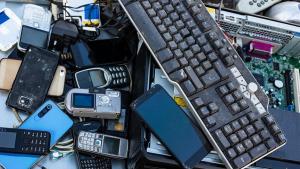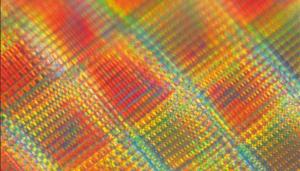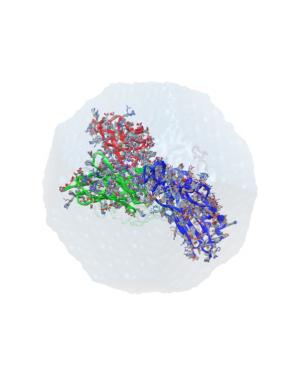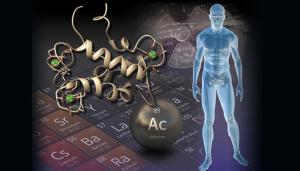LAB REPORT
Science and Technology Making Headlines
Oct. 29, 2021


NOAA satellite image of the Atlantic Ocean captured on September 11, 2018 at 11:45 a.m. EDT showing Hurricane Florence approaching the east coast with Tropical Storm Isaac and Hurricane Helene fast on her heels.
What Americans really think about climate change
It’s important to understand what Americans actually think about the critical issues that are dividing us.
One of those issues is climate change. And one of the most recent national polls on it is a special type of survey known as a highly dynamic deliberative polling experience. Announced this week, “The America In One Room Survey,” or A1R, is a Stanford University and Helena project that includes a consortium of institutions including California Forward, the Greater Houston Partnership, the Center for Houston’s Future and the In This Together.
NORC at the University of Chicago identified participants and conducted the initial and exit surveys which were part of the deliberative poll. Roger Aines, chief scientist for Lawrence Livermore’s Energy Program, participated and was one of the expert panelists evaluating the project.
The big questions put to the participants was — Where do we really fall on climate change? And more importantly — what are we willing to do about it?
“We have found at LLNL that people have a huge diversity of initial thoughts about how to get to a safe climate future,” Aines said. “I’m excited to see that the A1R process was able to bring out so much agreement from a group that also started with very diverse thoughts. This is the kind of personal decision making that we need to solve the climate crisis.”


Electronic waste contains rare earth elements that are hard to separate using conventional methods.
In rare form
Almost everyone has unused electrical appliances at home including old cell phones or smart phones. The old devices still have a value for the raw materials they contain, such as rare earth metals. The metals are used in a number of electronic products: plasma screens, special magnets or batteries. They are a key component for future technologies such as electric cars or renewable energy and have so far been irreplaceable.
Rare earths are coveted raw materials that are only available to a limited extent on earth and are mainly mined in China. They have to be extracted from ores and separated using complex separation processes.
Researchers have been working on recycling processes for the metals for some time. A group of scientists including Dan Park from the Lawrence Livermore National Laboratory developed a new method in which a natural protein could help in recovery.
It is about lanmodulin, the substance comes from bacteria that can metabolize methane and that occur in digested sludge, for example. The protein also has the property of being able to bind to valuable rare metals exceptionally well, including the elements cerium and neodymium.
Cerium is used for the production of light-emitting diodes and picture tubes. Neodymium is used for magnets in hard drives, or to drive electric and hybrid vehicles. However, these elements are difficult to separate from others. The researchers have now succeeded by collecting both substances from a solution using tiny lanmodulin beads to which the elements bound.


An optical microscopic image of a 3D printed carbon log-pile with strutted tube-in-tube beam morphology.
I’ll take a nano sandwich
If you reduce the density of a material, its stiffness also will be reduced. But scientists from Lawrence Livermore National Laboratory noticed that materials that are based on sandwich nanotubes retained their stiffness at lower densities. Modelling by materials scientists from the University of Groningen (The Netherlands) revealed how this could happen.
The two groups showed how to design lightweight but very stiff porous materials.
The collaboration started during a coffee break at a conference, where scientists from LLNL showed their preliminary experimental results on porous materials that were made using 3D printing.
A polymer was used to print a log pile structure, with tubes stacked perpendicularly, at a sub-micrometer scale. The material was then coated with nickel, and the polymer was pyrolyzed. The carbon from the polymer created nanotubes on the inside and on the outside of the nickel layer. After removing the metal, the carbon sandwich tubes remained, in the log pile configuration. The material retained almost all its stiffness when the tubes were created with more space between them.


A simulation of a computationally designed antibody interacting with the receptor binding domain of the spike protein of the SARS-CoV-2 virus. Graphic by Dan Faissol/LLNL.
A better understanding of immunity
Lawrence Livermore National Laboratory (LLNL) has joined the international Human Vaccines Project (HVP), bringing Lab expertise and computing resources to the consortium to aid development of a universal coronavirus vaccine and improve understanding of immune response.
The HVP is a nonprofit, public-private partnership with a mission to decode the human immune system and accelerate the development of vaccines and immunotherapies across major global diseases. The project brings together leading academic research centers, industrial partners, nonprofits and governments to answer core questions about how the human immune system fights disease and pioneer a new era in human health.
Under the three-year agreement with HVP, LLNL will leverage its extensive knowledge in vaccine research response — most recently from designing new antibodies and antiviral drugs for COVID-19 — its emerging work on artificial intelligence (AI) and computational modeling of immune response and sepsis, as well as its computational infrastructure and scientists, to help accelerate development of vaccines and other medical countermeasures that could be protective against pandemic threats. A universal coronavirus vaccine or therapeutic would be effective against an entire family of related viruses, including variants of concern such as Delta, and available “off-the-shelf” for deployment in areas of high risk to prevent severe illness and avoid future pandemics.


Actinium is a radioactive element that could revolutionize cancer medicine but its chemistry has thus far remained elusive. LLNL and Penn State researchers developed a new approach to study, capture and purify medical isotopes, including actinium. Their strategy leverages a natural protein that can tightly bind to medical isotopes without interacting with process impurities like radium, strontium, etc. Artwork by Thomas Reason/LLNL.
Protein gives a boost to cancer therapies
Lawrence Livermore National Laboratory (LLNL) and Penn State scientists have demonstrated how a protein can be recovered and purified for radioactive metals like actinium that could be beneficial for both next-generation drugs used in cancer therapies and the detection of nuclear activities.
Radioactive metals hold unique and essential places in a variety of medical imaging and therapeutic applications, but they require lengthy separation processes for their purification, as well as synthetic and costly chelators (molecules tailored to bind the radioactive metal ions) that must form exceptionally stable complexes in the patient to minimize toxicity. Actinium-based therapies could revolutionize cancer medicine, with treatment efficacy hundreds of times higher than current drugs. However, they remain out of reach due to difficulties throughout the actinium supply chain, from isotope production to studying the element's chemistry, and development of robust chelators for it.
"These challenges exist even for medical isotopes in relatively widespread use, such as radioactive yttrium, but they are even more taxing in the case of actinium," said LLNL scientist Gauthier Deblonde.





